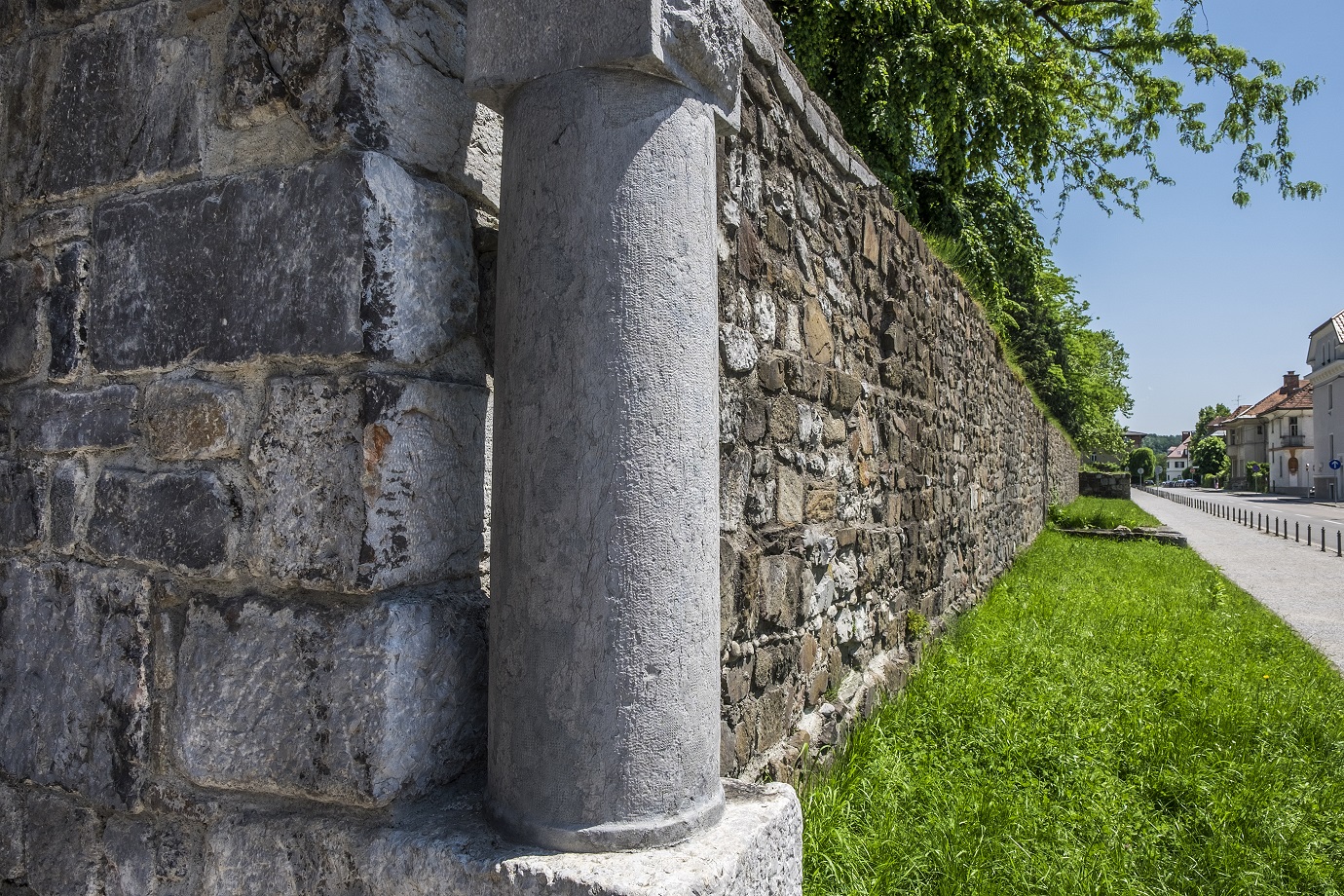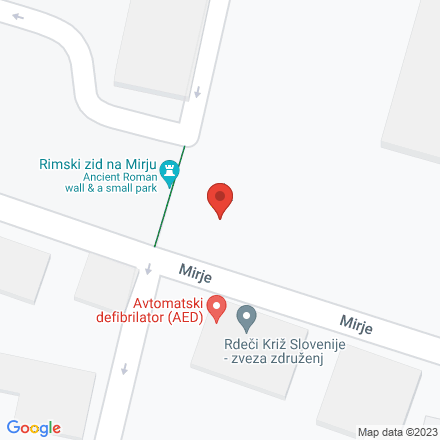The Roman Wall at Mirje is part of the Archaeological Park Emona, which includes ten sites across Ljubljana's city centre.
According to an inscription found near Emona's eastern gate (at present-day French Revolution Square), a major construction project—likely the city wall—was completed between the autumn of 14 AD and the spring of 15 AD. The wall, measuring 2.4 metres wide and six to eight metres high, enclosed the city centre in a precise rectangular layout. It featured at least 25 towers and four main gates, and was also surrounded by a moat.
The outer shells of the wall were built from cut stone blocks bonded with mortar, while the core was filled with conglomerate—a mixture of river pebbles, small stones, sand, and lime. This construction was so solid that in some places the wall has survived for nearly 2,000 years. The internal structure of the wall is visible today at Mirje, where a section west of the main south gate is still preserved. For defensive reasons, some of the side gates were walled up in antiquity—one such example remains in the western section of the wall at Mirje.
In the 1930s, the city fortifications at Mirje were renovated based on designs by architect Jože Plečnik. The stone pyramid, the elevated wall sections, entrances, and the lapidarium—a vaulted space displaying stone remains from nearby Roman houses—are all his work, as is the inner park. The colonnade near the former main south gate, however, is not of Roman origin.




